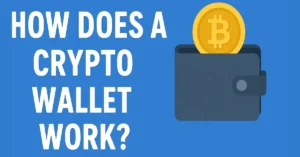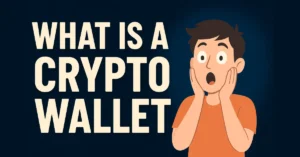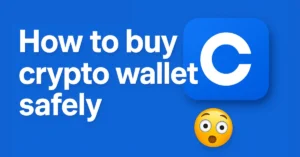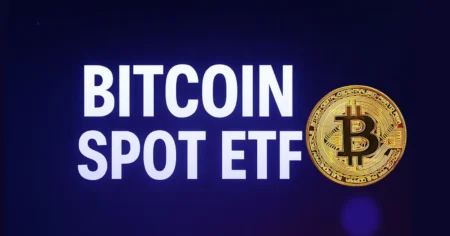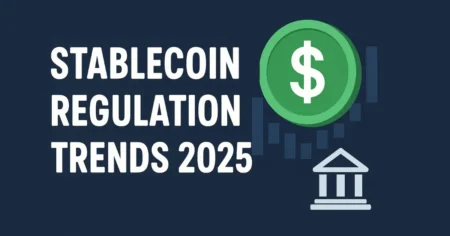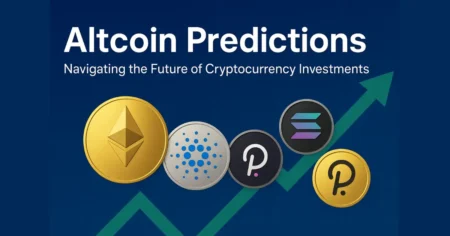Blockchain technology trends
Introduction to Blockchain and Its Growing Relevance
What is Blockchain Technology?
Blockchain is not just a buzzword—it’s a technological shift that’s reshaping industries worldwide. At its core, blockchain is a distributed ledger system. Instead of relying on a central authority like a bank or a server to verify transactions or store data, blockchain uses a decentralized network of computers (or nodes) to maintain a transparent, immutable, and secure record of activities.
Each piece of data or “block” in the chain is cryptographically linked to the previous one, creating an unbreakable timeline of records. This means no one can tamper with a single block without changing all subsequent ones—and that’s near impossible due to the consensus mechanisms involved (like Proof of Work or Proof of Stake). This ensures integrity and trust without intermediaries.
What makes blockchain revolutionary is not just its security, but also its ability to automate trust. For example, smart contracts—self-executing pieces of code stored on the blockchain—can trigger transactions or events without human intervention. That’s a game-changer for industries like finance, supply chain, healthcare, and even voting systems.
The best part? Blockchain is permissionless in many cases. Anyone with an internet connection can participate in the ecosystem, making it a powerful tool for financial inclusion and democratization of access to services.
Learn More about Blockchain.👇
Evolution of Blockchain from Bitcoin to Broader Use
When Satoshi Nakamoto introduced Bitcoin in 2009, blockchain was merely the underlying tech powering a new form of digital currency. Fast forward to today, and blockchain has evolved well beyond cryptocurrencies. Initially, it was synonymous with Bitcoin, but now it’s the backbone of decentralized apps (dApps), NFT marketplaces, DeFi platforms, and secure enterprise data sharing.
Ethereum took it a step further by introducing smart contracts, allowing developers to build decentralized applications without needing centralized infrastructure. This opened doors to endless innovations—from tokenizing assets to launching DAOs (Decentralized Autonomous Organizations).
Industries have started realizing that blockchain is more than just crypto. In logistics, it’s improving traceability. In healthcare, it’s enhancing patient data security. In legal systems, it’s powering immutable records and digital identity management. And it’s only growing.
Today, we see central banks exploring CBDCs (Central Bank Digital Currencies), governments piloting blockchain-based voting systems, and massive enterprises integrating blockchain for operational efficiency.
The trend is clear: Blockchain is no longer a fringe technology—it’s becoming foundational.
Trend #1 – Enterprise Adoption of Blockchain
From Startups to Fortune 500s
Blockchain isn’t just for crypto startups anymore. Over the past few years, Fortune 500 companies have been heavily investing in blockchain technology. Giants like IBM, Microsoft, Amazon, Walmart, and JPMorgan Chase are not only researching blockchain but actively deploying it across business processes.
IBM, for instance, launched its IBM Blockchain platform to help companies build their own blockchain networks. Walmart uses blockchain to track the origin of its food products, ensuring transparency and safety. JPMorgan developed Quorum, a private blockchain, to enhance internal financial operations. These aren’t experiments—they’re live implementations with real ROI.
Startups also continue to push the envelope by focusing on niche blockchain applications. For instance, VeChain specializes in supply chain solutions, while Chainlink powers smart contract oracles. The synergy between large corporations and innovative startups is creating a fertile ground for enterprise-level blockchain adoption.
What’s driving this trend? Efficiency, transparency, reduced fraud, and a competitive edge. Enterprises understand that blockchain can streamline audits, reduce paperwork, and build consumer trust.
Key Use Cases in Business Operations
Here’s a closer look at how enterprises are deploying blockchain:
- Supply Chain Management: Transparency is key. Blockchain tracks goods from origin to shelf, reducing fraud and ensuring authenticity.
- Payments and Finance: Faster cross-border transactions, lower fees, and automated settlements are revolutionizing how money moves.
- Digital Identity: Blockchain provides secure, verifiable identity systems, reducing the risk of fraud and data breaches.
- Smart Contracts: Automating agreements saves time and removes reliance on intermediaries in areas like real estate or insurance.
- Healthcare: Blockchain secures patient data, ensures proper access controls, and can even track pharmaceuticals to prevent counterfeits.
- Legal and Compliance: Immutable records make audits simpler and more reliable, especially in highly regulated industries.
Blockchain is fundamentally altering the way businesses think about trust and transparency. As regulatory clarity improves and platforms become more user-friendly, this trend is only going to intensify.
Trend #2 – Rise of Blockchain-as-a-Service (BaaS)
What is BaaS and Why It Matters
Blockchain-as-a-Service (BaaS) is to blockchain what cloud computing was to data storage—it’s a game-changer. BaaS allows businesses to build, host, and manage their blockchain applications and smart contracts without worrying about the underlying infrastructure.
Think of it like renting blockchain capabilities the same way you’d rent cloud storage from AWS or Azure. Companies no longer need to set up their own blockchain networks or hire a team of blockchain engineers to get started. They can simply subscribe to a BaaS platform and integrate blockchain into their operations.
Why is BaaS taking off? Because it drastically lowers the barrier to entry. Enterprises can test and deploy blockchain solutions with less risk, lower costs, and greater scalability. It’s ideal for industries like finance, healthcare, logistics, and insurance that need trust and transparency but can’t afford to overhaul their IT systems overnight.
BaaS is helping blockchain go mainstream by simplifying adoption. No more complex node setups, maintenance issues, or costly custom code—just plug and play.
Top Players Offering BaaS Platforms
Some of the biggest tech companies are racing to dominate the BaaS market:
- Microsoft Azure Blockchain Services: Allows businesses to build their own consortium blockchain networks using templates and integrations with existing Microsoft tools.
- Amazon Managed Blockchain: Enables quick setup of scalable blockchain networks using Hyperledger Fabric and Ethereum.
- IBM Blockchain Platform: Focuses on enterprise use, with powerful tools for building, governing, and growing blockchain solutions.
- Oracle Blockchain Cloud Service: Offers prebuilt templates and API integrations to accelerate development.
Smaller, more specialized platforms like Kaleido and Alchemy also offer customized blockchain environments for startups and SMEs. These platforms provide analytics, real-time dashboards, and even governance tools to manage participants.
The growing competition in BaaS is a clear indicator that blockchain isn’t just hype—it’s becoming a foundational layer of enterprise IT.
Trend #3 – Integration with the Internet of Things (IoT)
Securing IoT Devices Through Blockchain
The Internet of Things (IoT) is growing fast—connected thermostats, smart fridges, industrial sensors, autonomous vehicles—the list goes on. But with this growth comes a major concern: security. IoT devices are often vulnerable to hacking due to centralized architectures and weak authentication protocols.
Blockchain offers a compelling solution. By decentralizing the control of data and identity, it reduces single points of failure. Each IoT device can register itself on a blockchain network, verify its identity, and communicate securely without needing a central server.
This enhances device authentication, makes firmware updates more secure, and ensures tamper-proof logging of data. In industries like healthcare or automotive, where device failure can have serious consequences, blockchain adds a much-needed layer of trust.
Real-world use case? In agriculture, IoT sensors combined with blockchain can track environmental conditions for crops. This data can be logged immutably, ensuring accuracy for insurers, regulators, and buyers.
Real-World Applications of Blockchain-IoT
The convergence of blockchain and IoT isn’t just theoretical—it’s already in play across industries.
- Supply Chain and Logistics: Imagine a shipment of pharmaceuticals traveling across borders. IoT sensors track the temperature, humidity, and location, while blockchain records every movement in real-time. This ensures authenticity, reduces spoilage, and offers full transparency to stakeholders.
- Smart Homes and Cities: In smart cities, blockchain can manage energy usage data collected by IoT devices, reducing fraud and improving resource distribution. For smart homes, decentralized ledgers enhance privacy and prevent device spoofing—making homes more secure.
- Automotive Industry: Connected cars can use blockchain to verify software updates, log maintenance, and even manage peer-to-peer car sharing securely. Tesla and other innovators are already exploring this territory.
- Healthcare: Medical IoT devices like heart monitors or insulin pumps can securely store real-time health data on a blockchain, giving patients and doctors secure, immutable access. In emergencies, this data could be life-saving.
- Energy Grids: IoT sensors in solar panels and smart meters, paired with blockchain, can automate energy trading between households. This creates decentralized energy markets, empowering individuals to trade surplus power with neighbors without needing utility companies.
This blend of IoT and blockchain is more than a trend—it’s becoming a necessity for systems requiring automation, traceability, and security at scale.
Trend #4 – Decentralized Finance (DeFi) Explosion
Breaking the Traditional Finance Barriers
DeFi—short for Decentralized Finance—is arguably the most disruptive use of blockchain today. It represents a suite of financial services built on blockchain that eliminates the need for intermediaries like banks, brokers, or clearinghouses. From lending and borrowing to trading and insurance, everything is handled via smart contracts on platforms like Ethereum, Solana, or Binance Smart Chain.
The DeFi movement is driven by one key principle: financial inclusion. In traditional finance, millions of people remain unbanked or underbanked. DeFi changes this. Anyone with a crypto wallet and internet connection can participate, access loans, earn yield, or trade assets globally—without paperwork or credit checks.
DeFi also brings programmability. Developers can create complex financial instruments using smart contracts, enabling functions like flash loans, yield farming, or automated market making (AMM). It’s a financial revolution, coded into open-source software.
In 2021-2024 alone, DeFi platforms locked in tens of billions of dollars in value—proving that users trust these decentralized alternatives.
Popular DeFi Projects and Platforms
Here are some leading names reshaping finance:
- Uniswap: A decentralized exchange (DEX) using automated liquidity pools instead of order books.
- Aave: A decentralized lending and borrowing platform that lets users earn interest or borrow funds without intermediaries.
- Compound: Similar to Aave, but known for governance token (COMP) that gives users control over the protocol.
- MakerDAO: Offers the DAI stablecoin, pegged to the U.S. dollar and backed by crypto collateral.
- Curve Finance: A DEX optimized for stablecoin trading with low slippage.
What makes DeFi even more exciting is composability. DeFi platforms are like Lego blocks—you can build on top of each other to create entirely new products. For example, using Aave to borrow assets and then supplying them to another platform for yield farming.
However, DeFi isn’t without risk. Smart contract bugs, liquidity issues, and governance attacks are real concerns. Still, as platforms mature and audits become standard, DeFi is poised to replace—or at least rival—traditional financial systems.
Trend #5 – NFTs and Digital Asset Tokenization
Beyond Art – Real Estate, Music, and More
Non-Fungible Tokens (NFTs) took the world by storm during 2021, becoming the go-to format for digital art ownership. But the NFT space has evolved far beyond profile pictures and pixelated collectibles. The real innovation lies in tokenization—the process of converting real-world assets into digital tokens on a blockchain.
Here’s how NFTs and tokenization are reshaping industries:
- Real Estate: You can now tokenize ownership of a property, enabling fractional investment. Instead of needing $500,000 to buy a house, investors can purchase “shares” of a tokenized home.
- Music and Entertainment: Artists like Kings of Leon and Grimes have sold albums and exclusive content via NFTs. These tokens include built-in royalties, ensuring artists get paid every time their work changes hands.
- Gaming: In Web3 games, players own in-game assets as NFTs, which they can sell or trade outside the game. This has created real-world economies in digital worlds.
- Fashion: Brands like Nike and Gucci are experimenting with NFT wearables and digital twins of physical products, opening up new revenue streams.
- Intellectual Property: NFTs can represent ownership of patents, documents, or creative work, ensuring traceability and authenticity.
- NFTs introduce a new paradigm: ownership without intermediaries. Instead of relying on galleries, labels, or realtors, creators can monetize directly. It’s a shift toward creator empowerment and user-controlled economies.
Legal and Regulatory Implications
While NFTs offer exciting possibilities, they also raise serious legal questions. Who owns the intellectual property? What rights come with an NFT? What happens if the hosting server for the NFT image goes offline?
Regulators are still catching up. In the U.S., the SEC is closely examining whether some NFTs qualify as securities. Countries like the UK and Singapore are drafting frameworks to govern NFT taxation and copyright.
Here’s what to watch:
- Royalties: Currently, royalties set in NFT smart contracts aren’t enforceable across all platforms. That could change with universal standards.
- IP Ownership: Buying an NFT doesn’t always grant commercial rights. Terms need to be clear.
- Fraud and Scams: Copycat NFT collections and rug pulls have burned users. Platforms are introducing stricter verification and dispute resolution processes.
Despite the challenges, the long-term outlook for NFTs and tokenization is strong. As infrastructure improves and laws evolve, tokenized assets will become a standard part of both digital and real-world economies.
Trend #6 – Sustainability and Green Blockchain Initiatives
Energy Efficiency Improvements
One of the most pressing criticisms of blockchain technology—especially those based on Proof of Work (PoW)—has been its massive energy consumption. Bitcoin mining alone has been compared to the energy usage of entire countries. But the landscape is rapidly changing, thanks to a growing focus on sustainability and eco-friendly innovation.
The switch from PoW to Proof of Stake (PoS) is one of the most significant improvements. Ethereum’s transition to Ethereum 2.0 via the Merge is a perfect example. After shifting to PoS, Ethereum reduced its energy consumption by over 99.95%, making it vastly more eco-efficient.
Other consensus mechanisms like Delegated Proof of Stake (DPoS), Proof of Authority (PoA), and Proof of Space and Time (used by Chia) are designed with sustainability in mind. These systems reduce the reliance on brute computational force and instead reward network participation in smarter, less energy-intensive ways.
There’s also innovation in hardware and software. Developers are creating energy-efficient mining rigs, and some networks like Algorand are becoming carbon-negative by purchasing carbon offsets.
Another major step? Blockchain projects are increasingly being hosted on green cloud providers, or powered by renewable energy sources. In fact, entire mining operations are being relocated to regions with hydro or geothermal power to minimize their carbon footprint.
This shift isn’t just ethical—it’s strategic. As consumers and investors become more eco-conscious, projects that prioritize green practices are more likely to earn support and regulatory approval. Sustainable blockchain isn’t a trend—it’s the future.
Projects Leading the Green Blockchain Movement
Here are some key players driving sustainability in the blockchain world:
- Algorand: Marketed as a carbon-negative blockchain, Algorand partners with ClimateTrade to offset its carbon emissions automatically.
- Chia Network: Uses a unique Proof of Space and Time model to minimize energy use, leveraging unused hard drive space instead of CPUs/GPUs.
- Cardano: Built on PoS from the ground up, Cardano consumes far less power than PoW-based blockchains and invests in community-driven green projects.
- Tezos: Another PoS blockchain known for its energy efficiency and frequent adoption by eco-conscious NFT creators.
- Energy Web Foundation: Works to decarbonize the energy grid using blockchain, enabling companies to manage renewable energy production and consumption transparently.
As ESG (Environmental, Social, Governance) factors gain prominence in investment decisions, blockchain’s sustainability credentials will play a key role in determining which platforms thrive. The message is clear: blockchains that ignore the environment won’t survive in the long term.
Trend #7 – Blockchain in Supply Chain Management
Enhancing Transparency and Traceability
Supply chains are the arteries of the global economy. From farm to fork, manufacturer to retailer, millions of transactions and touchpoints occur daily. But there’s a problem—traditional supply chains are opaque, fragmented, and often riddled with inefficiencies or fraud.
Blockchain is changing that by offering a single source of truth across all stakeholders in the chain. Every transaction, transfer, and verification is recorded on an immutable ledger, accessible to all parties involved. This improves traceability, accountability, and trust—and it does so in real-time.
Let’s take an example: food safety. In a traditional system, tracing the origin of contaminated produce can take weeks. With blockchain, it can be done in seconds. Walmart, in partnership with IBM’s Food Trust blockchain, managed to reduce traceability time for mangoes from 7 days to 2.2 seconds.
In pharmaceuticals, blockchain helps track medicine through every stage of the supply chain, combating counterfeit drugs—a $200 billion annual problem. In fashion, it verifies ethical sourcing of raw materials like cotton or leather, allowing brands to prove sustainability claims.
Blockchain doesn’t just offer visibility—it empowers accountability. Every stakeholder becomes responsible for their part of the chain, reducing errors and promoting more ethical and efficient operations.
Case Studies from Retail and Food Industries
- Walmart & IBM Food Trust: Walmart was one of the first major retailers to require its leafy green suppliers to use blockchain. The result? Enhanced food safety, faster recalls, and greater consumer confidence.
- De Beers & Tracr: De Beers uses blockchain to track diamonds from the mine to the market, ensuring they are ethically sourced and conflict-free.
- Nestlé: In collaboration with OpenSC, Nestlé uses blockchain to verify sustainable sourcing of palm oil and dairy products, giving customers access to detailed provenance information via QR codes.
- Provenance & Fashion Brands: Provenance, a blockchain startup, helps fashion brands prove fair trade practices by recording production details on the blockchain—everything from fabric sourcing to labor conditions.
- Carrefour: The French retail giant uses blockchain to track fresh produce and meat. Consumers can scan a QR code on packaging and see the product’s entire journey, including where it was harvested, packed, and transported.
These real-world applications demonstrate that blockchain isn’t just a theoretical improvement—it’s a practical, profitable one. As consumers demand more transparency and as regulations tighten, blockchain-powered supply chains are quickly becoming the industry standard.
Trend #8 – Enhanced Interoperability Between Blockchains
Solving the Problem of Blockchain Silos
One of the major obstacles in blockchain’s path to mass adoption has been interoperability—the ability for different blockchains to communicate and work together. Right now, most blockchains are like isolated islands. Ethereum can’t natively talk to Bitcoin. Solana can’t understand Cardano. This lack of cross-chain communication limits innovation and frustrates developers and users alike.
But a new wave of solutions is tackling this issue head-on. Interoperability protocols and blockchain bridges are being developed to connect these networks, enabling seamless asset transfers, data sharing, and smart contract execution across ecosystems.
Why is this important? Because the future isn’t about one blockchain winning—it’s about many chains working together. Think of it like the early internet. Before universal protocols like TCP/IP, networks were fragmented. Once standards were introduced, the internet exploded in usefulness and adoption. Blockchain is undergoing a similar transition.
Better interoperability leads to better user experiences, more robust apps, and greater scalability. It allows developers to pick the best features from different blockchains and combine them, rather than being locked into one platform.
Cross-Chain Protocols and Bridges
Here are some of the most notable interoperability projects:
- Polkadot: Built with interoperability in mind, Polkadot uses parachains (independent blockchains) that can communicate with each other through a central relay chain.
- Cosmos: Often called the “Internet of Blockchains,” Cosmos enables different blockchains to communicate via its Inter-Blockchain Communication (IBC) protocol.
- Chainlink CCIP (Cross-Chain Interoperability Protocol): Chainlink’s CCIP allows smart contracts to interact across multiple blockchains securely.
- Thorchain: A decentralized liquidity protocol enabling cross-chain swaps of native assets (swapping BTC for ETH without wrapping).
- Wanchain: Works on creating decentralized bridges that support private and public blockchains alike.
Even centralized exchanges and wallets are developing their own cross-chain support, recognizing the need to break down blockchain silos for mass adoption.
As the ecosystem matures, expect cross-chain operability to be a defining feature of successful Web3 platforms.
Trend #9 – Regulatory Changes and Compliance Landscape
Global Governments and Blockchain Policies
Blockchain’s growth is inevitably drawing the attention of global regulators. As the technology matures and enters mainstream use, governments around the world are realizing the urgent need to create clear, comprehensive, and enforceable frameworks. These regulations aim to address issues around security, money laundering, fraud, consumer protection, and taxation—while still encouraging innovation.
Some countries have taken a pro-innovation stance. For instance:
- Switzerland is often referred to as the “Crypto Valley” thanks to its favorable blockchain laws, including clear definitions around utility tokens and a regulatory sandbox for fintechs.
- Singapore provides a well-defined regulatory environment for blockchain and crypto projects via the Monetary Authority of Singapore (MAS), attracting many Web3 startups.
- El Salvador made headlines by becoming the first country to adopt Bitcoin as legal tender and is actively investing in blockchain education and infrastructure.
Others have adopted a more cautious or restrictive approach:
- China banned all crypto trading and mining in 2021 but is simultaneously developing and piloting its own Central Bank Digital Currency (CBDC)—the digital yuan.
- The United States has a fragmented approach. Agencies like the SEC, CFTC, and IRS each have different views on how blockchain and crypto assets should be treated, creating a murky legal landscape that often confuses innovators and investors.
- Meanwhile, global organizations such as the FATF (Financial Action Task Force) are pushing for standards like the “Travel Rule” to apply to crypto transactions, requiring wallet providers to store and share transaction data, similar to traditional banks.
- This regulatory shift isn’t a barrier—it’s a sign that blockchain is being taken seriously. As compliance frameworks develop, institutional investment and public trust will likely surge, unlocking the next phase of adoption.
Compliance Tools and Protocols
As governments tighten the reins, blockchain developers and businesses are building solutions to help ensure compliance without compromising decentralization. Key tools and trends include:
- KYC/AML Solutions: Platforms like Civic and KILT Protocol are providing decentralized identity systems that can be integrated into blockchain apps for Know Your Customer (KYC) and Anti-Money Laundering (AML) compliance.
- RegTech for Crypto: Companies such as Chainalysis and Elliptic analyze blockchain transactions for suspicious activity, helping exchanges, banks, and regulators monitor the ecosystem.
- Smart Contract Auditing: Services like Certik, Quantstamp, and OpenZeppelin ensure smart contracts are free from vulnerabilities that could be exploited.
- On-chain Governance Compliance: Some DAOs and protocols are embedding compliance tools directly into governance mechanisms, ensuring they can adapt quickly to new regulations.
As the legal environment evolves, we’re likely to see a rise in hybrid compliance models, where the underlying blockchain remains decentralized, but certain layers (like user onboarding or fund transfers) meet regulatory requirements.
Ultimately, regulation will act as a bridge—not a barrier—between blockchain innovation and real-world integration.
Trend #10 – Blockchain and Artificial Intelligence (AI) Synergy
Where Blockchain Meets Machine Learning
Two of the most disruptive technologies in the world—Blockchain and Artificial Intelligence (AI)—are now converging. This fusion has the potential to transform how data is managed, processed, and utilized across countless industries.
AI thrives on data. The more data it can access, the better it performs. But centralized data silos and privacy concerns often limit access. Enter blockchain: a decentralized, transparent, and secure ledger system that can provide verified and tamper-proof data to AI systems.
On the flip side, blockchain can also benefit from AI. By using machine learning, blockchain networks can:
- Predict network congestion and adjust fees automatically.
- Detect fraud or suspicious behavior in real time.
- Optimize energy consumption in mining or transaction validation.
- Automate smart contract testing and validation.
Together, AI and blockchain offer a model where trust, efficiency, and automation coexist seamlessly. It’s like giving the blockchain a brain—and giving AI a memory it can trust.
Use Cases for AI-Powered Blockchain Solutions
Let’s look at where this synergy is already showing results:
- Healthcare: AI algorithms analyzing patient data on a blockchain can identify patterns and diagnose diseases with higher accuracy, while the blockchain ensures data security and patient consent.
- Finance: AI can detect fraud and predict market trends, while blockchain ensures the transparency of data and transactions. Platforms like SingularityNET aim to decentralize AI services using blockchain.
- Supply Chain: AI models can optimize logistics routes and predict inventory needs. Blockchain tracks each item and logs every step, ensuring visibility and accuracy.
- Cybersecurity: Blockchain secures access and logs actions. AI detects threats and responds autonomously. The combination provides a robust defense against cyber attacks.
- Governance and Voting: AI helps model public opinion and propose policies. Blockchain ensures secure, transparent, and tamper-proof voting mechanisms.
- IoT Data Management: AI can make sense of the massive data from IoT devices, while blockchain ensures the data is accurate and hasn’t been tampered with.
Challenges still exist—especially around scalability, ethical data use, and compatibility—but as both technologies mature, their combined use will become a cornerstone of next-gen digital infrastructure.
Challenges in Blockchain Adoption
Scalability, Cost, and Complexity
For all its advantages, blockchain still faces several major hurdles before it can achieve mass adoption:
- Scalability: Popular blockchains like Ethereum have struggled with slow transaction speeds and high fees during peak times. Solutions like Layer 2 (Arbitrum, Optimism) and sharding are in progress, but the road is long.
- High Costs: Running a blockchain node, developing smart contracts, or minting NFTs can be expensive, especially on PoW networks. Not every business can afford these upfront costs.
- Technical Complexity: Blockchain is not plug-and-play. It requires specialized skills—cryptography, consensus mechanisms, and decentralized app development aren’t yet mainstream competencies.
- User Experience: Many blockchain apps have clunky interfaces and confusing processes. Wallet setup, seed phrase management, and gas fees are often intimidating for non-tech users.
- Fragmentation: With so many blockchains and standards, interoperability is still an issue, as previously mentioned. Developers often need to build versions of the same app for multiple platforms.
User Education and Trust Barriers
Mass adoption isn’t just a tech problem—it’s also a people problem.
- Misinformation: Many still equate blockchain solely with volatile cryptocurrencies or scams. There’s a massive education gap that needs closing.
- Security Risks: Hacks, rug pulls, and phishing attacks damage trust. People fear losing money or falling prey to fraud.
- Lack of Regulation: While decentralization is a feature, the absence of oversight scares off users and businesses who want guarantees and protections.
- Complex Jargon: Terms like “staking,” “hashing,” and “dApp” are still foreign to the average person. Simplifying language and experiences will be crucial moving forward.
To overcome these challenges, the industry must focus on education, simplification, and collaboration. Just as the internet became user-friendly over time, so too will blockchain—but it requires intent and effort from developers, educators, and policymakers alike.
The Future of Blockchain – Predictions for the Next Decade
Expert Opinions and Market Forecasts
The past decade laid the foundation for blockchain’s disruptive potential—but the next ten years will define its dominance. According to leading analysts, blockchain will become as foundational to the digital world as the internet itself.
Gartner forecasts that blockchain will generate over $3 trillion in business value by 2030. Deloitte’s annual blockchain surveys reveal that more than 80% of enterprises view it as a critical priority. But what exactly does the future hold?
Experts agree on a few core themes:
- Mass Adoption Through Simplification: The blockchain industry is moving toward more user-friendly platforms. With better UX, intuitive wallets, and easy onboarding, everyday users—not just developers—will interact with blockchain daily.
- Universal Interoperability: Expect more seamless data and value transfers across chains. The winners will be platforms that integrate effortlessly with others, rather than trying to dominate solo.
- AI and Blockchain Co-Evolution: As detailed earlier, the integration of artificial intelligence with decentralized systems will unlock new business models—especially in healthcare, finance, and logistics.
- Tokenization of Everything: From real estate and equities to digital identities and licenses, almost every asset will be tokenized. This trend will reshape how we own, trade, and access value.
- Government Blockchain Projects: Governments will adopt blockchain for everything from welfare disbursement and tax collection to land registration and public records.
- Regulatory Maturity: Regulatory clarity will evolve to support growth rather than hinder it. This will attract institutional investors and enable a secure environment for innovation.
But the industry must also brace for mass consolidation. Thousands of tokens and blockchain projects exist today, but only a few will survive the test of time. The rest will fade out or merge with more successful platforms.
What to Expect in 2030 and Beyond
By 2030, blockchain will be so embedded in our lives that most people won’t even realize they’re using it. Much like how we use TCP/IP every day without understanding it, blockchain will operate in the background—powering the tools, apps, and services we rely on.
Here are a few specific future scenarios:
- Self-Sovereign Identity: You’ll own and control your identity through a decentralized blockchain wallet—no more logging into services with passwords or email confirmations.
- Global Digital Currency Standards: Central Bank Digital Currencies (CBDCs) will be widely used. We’ll see cross-border payments settled in seconds with low fees—thanks to blockchain.
- Smart Cities Powered by Blockchain: From traffic management and pollution monitoring to smart energy grids and automated taxes, blockchain will be the infrastructure layer of intelligent urban living.
- Blockchain Voting Systems: Secure, transparent, and tamper-proof elections will become a reality through blockchain-powered voting platforms—improving democracy and reducing corruption.
- Decentralized Autonomous Organizations (DAOs): More businesses and communities will run as DAOs, governed by code rather than traditional hierarchies. It’s a radical shift in how we work, invest, and collaborate.
- Environmental Impact Solutions: Blockchain will be used to validate and trade carbon credits, track sustainability efforts, and enforce climate commitments.
The coming decade isn’t just about growth—it’s about mainstream normalization. Blockchain won’t be viewed as a niche innovation. It will be core digital infrastructure, just like the internet, cloud computing, and mobile devices.
Conclusion
Blockchain technology has transitioned from an obscure experiment in digital currency to a transformative force reshaping how we live, work, and interact. From enterprise adoption and decentralized finance to NFTs, supply chains, and the integration of AI—its applications are as diverse as they are powerful.
The trends discussed in this article make one thing clear: blockchain isn’t just a passing trend—it’s the foundation of a new digital era. Yes, challenges remain—scalability, user education, and regulation among them—but the industry’s momentum is undeniable.
As interoperability improves, sustainability concerns are addressed, and regulatory clarity emerges, we will see blockchain move from the fringes to the forefront of technological innovation. Whether you’re an entrepreneur, developer, investor, or curious consumer, now is the time to engage with this revolution.
The future is decentralized—and it’s already here.
FAQs
What industries are being transformed by blockchain?
Blockchain is revolutionizing industries like finance (DeFi), supply chain (traceability), healthcare (secure data), real estate (tokenization), gaming (NFTs), and even governance (voting systems). Its versatility makes it applicable across almost every sector.
Is blockchain secure and private?
Yes, blockchain is highly secure due to cryptographic protocols and consensus mechanisms. However, privacy depends on the blockchain type—public chains like Ethereum are transparent, while private blockchains can offer enhanced confidentiality features.
How can a business start using blockchain?
Businesses can begin by identifying areas that benefit from transparency and automation (logistics or payments). Using Blockchain-as-a-Service (BaaS) platforms like IBM Blockchain or Azure can simplify the setup without requiring deep technical knowledge.
Will blockchain replace traditional banking?
Blockchain won’t eliminate banks entirely but will transform them. Traditional institutions are already exploring blockchain for payments, settlements, and digital identity services. DeFi platforms also challenge banks by offering financial services directly to consumers.
What are the top skills needed for a career in blockchain?
Key skills include smart contract development (Solidity), cryptography, decentralized app (dApp) development, blockchain architecture, and understanding tokenomics. Soft skills like critical thinking and innovation are also highly valued.
Also, read
- What is a crypto wallet, and how does it work? – Coinsify
- 10 Crypto Terms Every Beginner Must Know: Coinsify
- What is blockchain technology? Complete Guide – Coinsify
- How to Buy Crypto Safely in 2025: Complete Guide – Coinsify
- Bitcoin vs Ethereum: Key Differences Explained: Complete Guide
- Ultimate Blockchain Glossary: Learn Blockchain Terms Easily
- How to Buy Bitcoin Safely (Complete Beginner’s Guide)
- Top 10 Crypto Wallets for Beginners (2025 Edition)
- What is cryptocurrency? A Beginner-Friendly Guide (2025)
